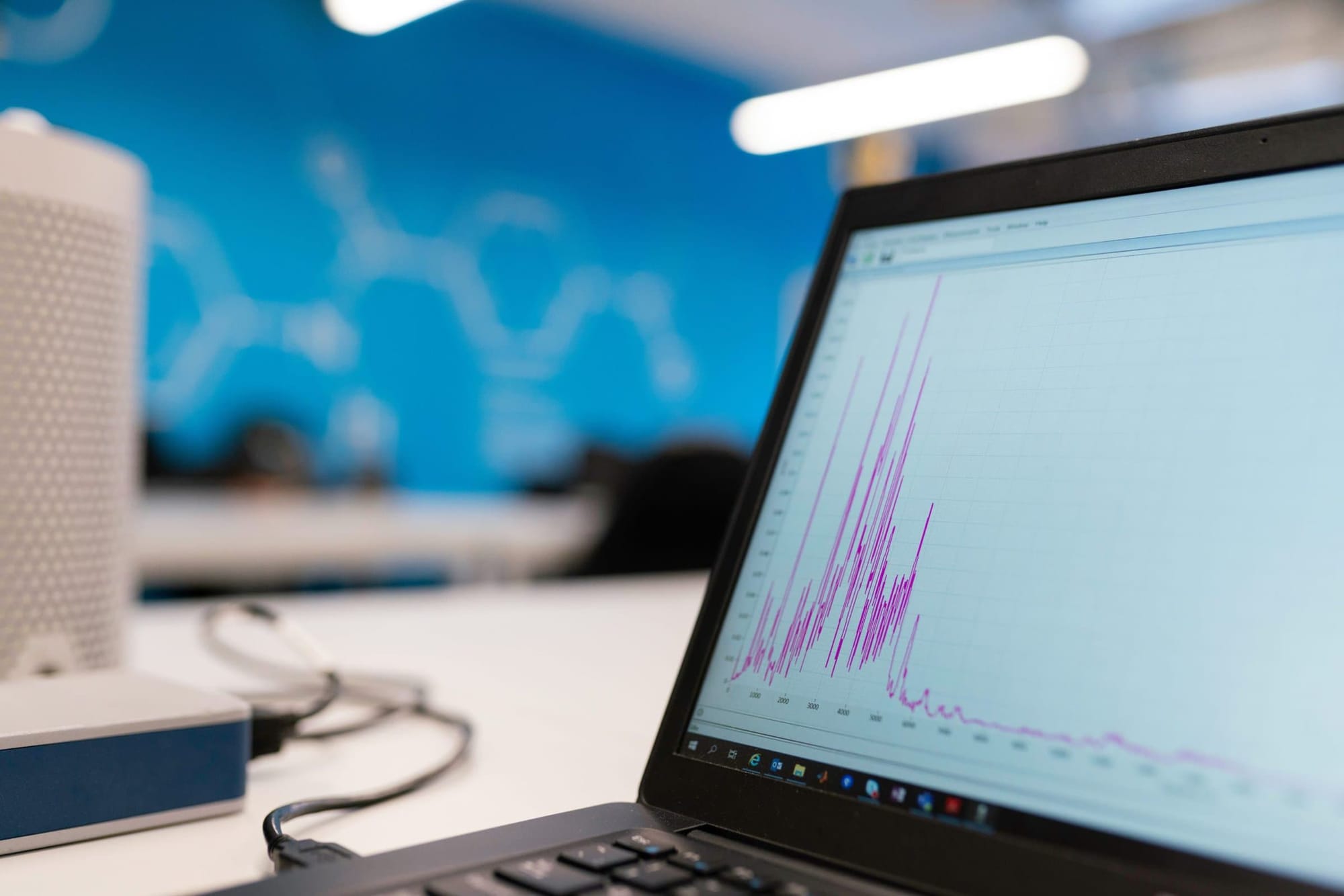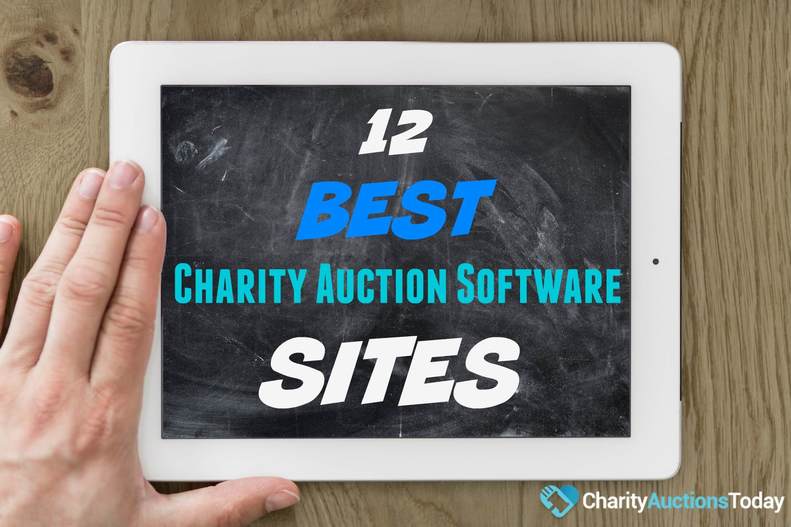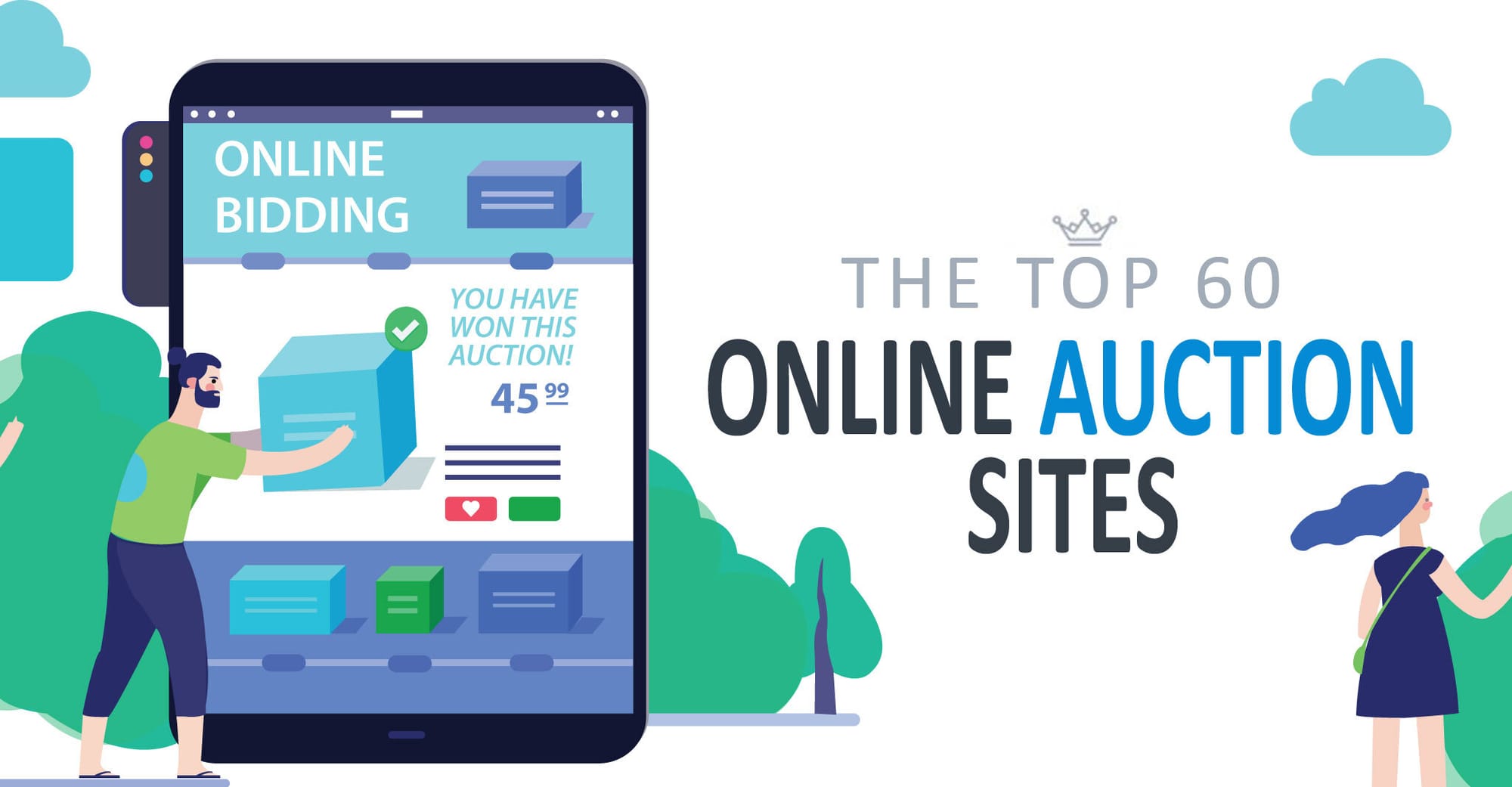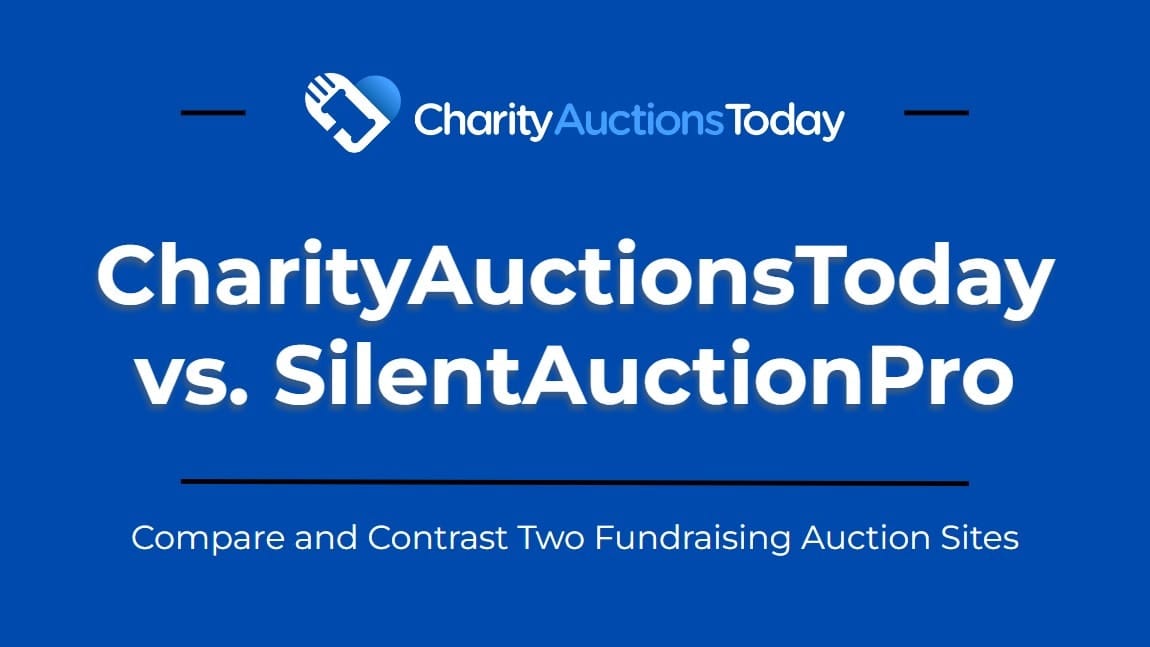How much does live auction software cost? CharityAuctionsToday can help you understand common fees and pricing structures for auction software providers.
Live auctions are a dynamic way to sell items or services. They create an exciting atmosphere that encourages competitive bidding.
But how do you manage such an event effectively? The answer lies in live auction software.
This software streamlines the auction process. It allows real-time bidding and provides tools for managing the event.
But a key question remains. How much does live auction software cost? Can you or your organization afford it?
Don’t Let Hidden Costs Kill Your Live Event
Live auction platforms can come with surprise fees and complexity. Launch with CharityAuctionsToday for transparent pricing, intuitive tools, and all the support you need — no surprises.
Launch Your Live Auction NowThis article aims to answer that question. We'll explore the factors that influence the cost of this software.
Whether you're an auctioneer, event planner, or business owner, this guide will help you make an informed decision. Let's dive in.
Understanding Live Auction Software
Live auction software is a digital tool designed to facilitate the management of live auctions. It provides a platform for real-time bidding, allowing participants to place bids instantly from anywhere.
The software also offers features for auction setup, item cataloging, and bidder registration. It can handle payment processing, provide detailed reporting, and even integrate with social media for promotional purposes. Understanding these functionalities is crucial when considering the cost of live auction software.
Key Features That Influence Live Auction Software Cost
The cost of live auction software is largely influenced by the features it offers. Basic functionalities are typically included in the base price, while advanced features may come at an additional cost.
The more comprehensive the software, the higher the price is likely to be. However, not all auctions require advanced features, so it's important to assess your specific needs before making a purchase.
Here are some common features that can affect the cost of live auction software:
- Real-time bidding capabilities
- Auction setup and management tools
- Item cataloging and tracking
- Bidder registration and management
- Payment processing and financial reporting
- Social media integration and promotional tools
Basic Features
Basic features of live auction software typically include auction setup tools, item cataloging, and bidder registration. These functionalities are essential for running a live auction and are usually included in the base price of the software.
Real-time bidding is another fundamental feature. It allows participants to place bids instantly during the live auction, creating a dynamic and engaging bidding environment.
Advanced Features
Advanced features can greatly enhance the functionality of live auction software, but they often come at an additional cost. These may include detailed financial reporting, social media integration, and promotional tools.
Payment processing is another advanced feature that can influence the cost. This functionality allows for seamless transactions, making it easier for bidders to participate and for auction organizers to manage payments.
Pricing Models for Live Auction Software
The pricing model of live auction software can significantly impact its cost. There are two main pricing models: one-time licensing and subscription-based.
One-time licensing involves a single, upfront payment for the software. This model often includes lifetime access to the software, but updates and support may come at an additional cost.
Subscription-based pricing, on the other hand, involves regular payments (usually monthly or annually). This model typically includes updates and support as part of the subscription fee.
Here are some key differences between the two pricing models:
- One-time licensing: Higher upfront cost, potential additional costs for updates and support
- Subscription: Lower upfront cost, ongoing payments, usually includes updates and support
One-Time Licensing vs. Subscription
One-time licensing can be a cost-effective option if you plan to use the software for a long time. However, it's important to consider the potential additional costs for updates and support.
Subscription-based pricing can be more affordable upfront and includes regular updates and support. However, the ongoing costs can add up over time, so it's important to consider your long-term budget.
In both cases, it's crucial to understand what is included in the price and what may come at an additional cost.
Auction Software as a Service
It's much more common today to pay for software as an ongoing service as opposed to something you upload once to your computer(s). Software as a Service (SaaS) often comes with similar pricing models: one-time, and subscription. However these can offer more flexibility.
- One-Time Use: Since you aren't buying a program, just access to it, you will likely pay less for this option. Depending on the auction software business you choose, you might be able to pay at the end of your event, rather than upfront. This is ideal if you only plan to hold one or very infrequent auctions, although you might not have access to all features with it.
- Subscription Use: A monthly or yearly subscription for access to the auction software is a good investment if you hold regular auctions. Many auction software companies will offer more than one pricing tier with different features available at each, so you can choose the one that best suits your needs and budget.
SaaS companies have become more and more common as the world has become more widely connected to the internet. While there are some drawbacks to this model (you cannot access it without an internet connection, for example) for the purposes of auctions, where you want live bidding from online bidders, it is a great solution.
Additional Costs to Consider
Beyond the base price of the software, there are often additional costs to consider. These can include setup fees, customization costs, and training fees.
Setup fees cover the cost of installing the software and getting it up and running. Customization costs apply if you need specific features or functionalities that are not included in the base software.
Training fees can apply if you or your team need assistance learning how to use the software. These costs can vary widely, so it's important to inquire about them before making a purchase.
Factors Affecting Live Auction Software Fees
Several factors can affect the cost of live auction software. These include the size and scalability of the software, the level of customization and integration required, and the support and maintenance provided by the software provider.
Here are some key factors that can affect live auction software fees:
- Size and scalability: The ability of the software to handle different sizes of auctions and scale up or down as needed.
- Customization and integration: The need for specific features or functionalities, and the ability to integrate with other software or systems.
- Support and maintenance: The level of customer support provided, and the cost of maintaining and updating the software.
Size and Scalability
The size and scalability of the software can significantly impact its cost. Software designed to handle large auctions or scale up to accommodate growth will typically cost more than software designed for smaller auctions.
However, investing in scalable software can be more cost-effective in the long run, as it can grow with your business and adapt to your changing needs.
Customization and Integration
Customization and integration can also affect the cost of live auction software. If you require specific features or functionalities that are not included in the base software, you may need to pay extra for customization.
Similarly, if you need the software to integrate with other systems or software (such as payment processors or CRM systems), this can also increase the cost.
Support and Maintenance
The level of support and maintenance provided by the software provider can also impact the cost. Some providers include support and maintenance in the base price, while others charge extra for these services.
It's important to understand what level of support and maintenance is included in the price, and what may come at an additional cost. This can help you avoid unexpected expenses down the line.
The Total Cost of Ownership (TCO)
When considering the cost of live auction software, it's crucial to consider the Total Cost of Ownership (TCO). TCO includes not only the upfront cost of the software but also ongoing costs such as maintenance, support, and upgrades.
It's also important to factor in any potential hidden costs. These could include costs for data migration, additional hardware requirements, or costs associated with downtime or software failures.
Understanding the TCO can help you make a more informed decision about which live auction software is the best fit for your budget and needs. It's not just about the initial price tag, but the long-term investment. And, perhaps it goes without saying, there is little to no cost of ownership associated with using auction SaaS platforms.
How to Choose the Right Live Auction Software
Choosing the right live auction software involves more than just comparing prices. It's about finding a solution that meets your specific needs and provides value for money.
Comparing Providers and Features
Start by comparing different providers and the features they offer. Look for software that includes the features you need and fits within your budget.
Also, consider the provider's reputation and customer reviews. These can give you insights into the software's performance and the quality of customer support.
Assessing Long-Term Value
When assessing the value of live auction software, consider its potential return on investment. This includes not only the revenue it can generate from auctions but also the time and resources it can save.
Also, consider the software's scalability. Can it grow with your needs, or will you need to invest in a new solution as your auctions become more complex or attract more participants?
Investing Wisely in Live Auction Software
Investing in live auction software is a strategic decision that can significantly impact your auction's success. It's crucial to consider all factors, from features to pricing, to ensure you're making a wise investment.
Remember, the cheapest option isn't always the best. Value for money, scalability, and long-term ROI should guide your decision.
Frequently Asked Questions
What determines the cost of live auction software?
Total cost depends on plan tier, number of events, attendee/bidder volume, streaming or stage tools, texting volume, payment processing, ticketing needs, support level on show night, and add-ons like seating charts or sponsor pages.
What pricing models do live auction platforms use?
- Per-event licenses for a single live/virtual gala.
- Subscriptions (monthly/annual) with event caps or contact limits.
- Transaction/percentage fees on payments processed.
- Hybrid: smaller subscription + per-transaction fees.
How much do organizations typically spend for a live auction solution?
Small events: ~$0–$500 for entry plans or one-event licenses.
Mid-size galas: ~$500–$2,000 with ticketing, texting, live appeal screens.
Large/complex: ~$2,000–$6,000+ with premium support, seating, advanced reporting. Actual totals vary with volume and add-ons.
Do live-auction features cost more than silent-auction tools?
Usually. Real-time bid calling, clerking consoles, paddle raise thermometers, big-screen leaderboards, and livestream production tools can add to your plan or require higher tiers.
How do livestream or hybrid features influence price?
Built-in streaming, remote bidding sync, and latency-optimized tools may be premium. If using external streaming, budget for encoding software, bandwidth, and any integration fees.
Does ticketing and seating increase the cost of live auction software?
Often yes. Advanced ticketing (tables, meal choices), seating charts, table assignments, and sponsor packages may be add-ons. Confirm whether ticket fees stack with payment processing.
Are SMS outbid alerts and push notifications included in the price?
Email alerts are commonly bundled; SMS usually has per-message costs and may require number registration/verification. Keep messages concise and targeted to manage spend during showtime.
How do payment processing fees affect our budget—and can guests cover them?
Standard processing applies to bids, donations, and tickets. Many platforms offer a donor “cover fees” toggle, which can offset costs, but adoption varies—don’t assume 100% coverage.
Should we budget for card readers, tablets, or on-site specialists for the live program?
Possibly. Some events rent readers, hotspots, or tablets and hire day-of specialists for check-in, bid clerking, and checkout. These optional services improve flow but add to costs.
Do auctioneer tools and clerking consoles add extra fees to live events?
Sometimes. Pro-level features—bid paddles synced to the console, real-time increments, and item switching—may require a higher plan or paid module. Confirm what’s included for your run-of-show.
Are setup, rehearsals, and training included in the software price?
Basics (help docs, webinars) are often included. Private trainings, rehearsal support, run-of-show consulting, and custom slide templates may be add-ons or included on upper tiers.
What limits or overage fees commonly appear in live auction plans?
- Bidder/contact caps and SMS volumes.
- Admin user limits and storage for photos/video.
- Event count limits or concurrent session limits.
- Premium support windows outside standard hours.
How do payouts, refunds, and chargebacks affect total cost after the event?
Payout timing varies; bank holidays can delay deposits. Processing fees on refunds/chargebacks may not be returned. Clarify timelines and any dispute fees to plan post-event cash flow.
Will we be able to export all data and integrate with our CRM/accounting without extra fees?
Your agreement should confirm data ownership and export rights (CSV/API). Some connectors are included; others are paid. Verify mapping for bids, donations, items, guests, and payments.
How do we estimate total cost of ownership (TCO) for a live auction event?
- Choose plan tier (event vs subscription).
- Add processing on tickets, bids, donations; include any fee-cover offset.
- Estimate SMS volume, live tools (thermometers, leaderboards), seating.
- Include optional hardware/staffing and training/rehearsal support.
- Add a 10–20% buffer for spikes, overages, or last-minute needs.
How can we control costs while maximizing live-auction revenue?
- Use seat charts and pre-registration to speed check-in and reduce support hours.
- Limit SMS to outbid + last-call; rely on screens and emcee prompts.
- Enable digital wallets for faster checkout and fewer staffing needs.
- Rehearse run-of-show to prevent overtime and last-minute add-ons.
What should we ask vendors to include on a sample invoice for clarity?
- License/plan fee, event count, admin users, bidder/guest limits.
- Ticketing, seating, sponsor pages, and live appeal tools.
- SMS allotments/overage rates and number registration fees.
- Processing rates, payout schedule, refund/chargeback fees.
- On-site staff/hardware and after-hours support charges.
When is it worth upgrading to a higher-tier live auction plan?
Upgrade when you need pro features (real-time clerking, stage displays, hybrid sync), higher support SLAs on event night, or larger SMS/guest limits that prevent bottlenecks and protect revenue.
💡 Try this in ChatGPT
- Summarize the article "How Much Does Live Auction Software Cost?" from https://ghost.charityauctionstoday.com/p/how-much-does-live-auction-software-cost/ in 3 bullet points for a board update.
- Turn the article "How Much Does Live Auction Software Cost?" (https://ghost.charityauctionstoday.com/p/how-much-does-live-auction-software-cost/) into a 60-second talking script with one example and one CTA.
- Extract 5 SEO keywords and 3 internal link ideas from "How Much Does Live Auction Software Cost?": https://ghost.charityauctionstoday.com/p/how-much-does-live-auction-software-cost/.
- Create 3 tweet ideas and a LinkedIn post that expand on this FAQ topic using the article at https://ghost.charityauctionstoday.com/p/how-much-does-live-auction-software-cost/.
Tip: Paste the whole prompt (with the URL) so the AI can fetch context.
Tom Kelly
Tom Kelly, TEDx speaker and CEO of CharityAuctions.com, helps nonprofits raise millions through auctions and AI. He hosts The Million Dollar Nonprofit podcast and inspires leaders to live their legacy, not just leave it.
Table of contents
Create Your Auction
Raise 40% more with smart bidding tools






